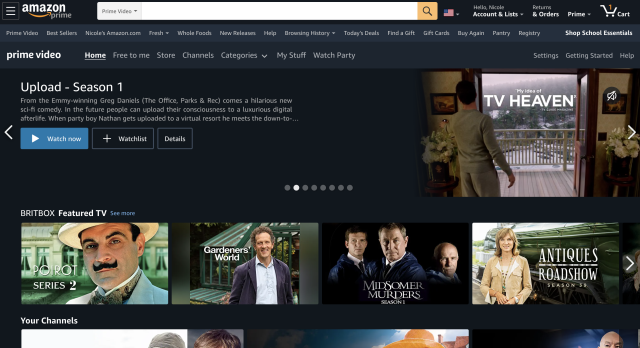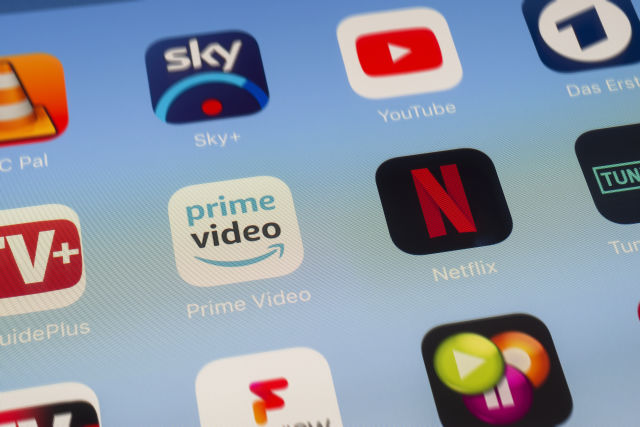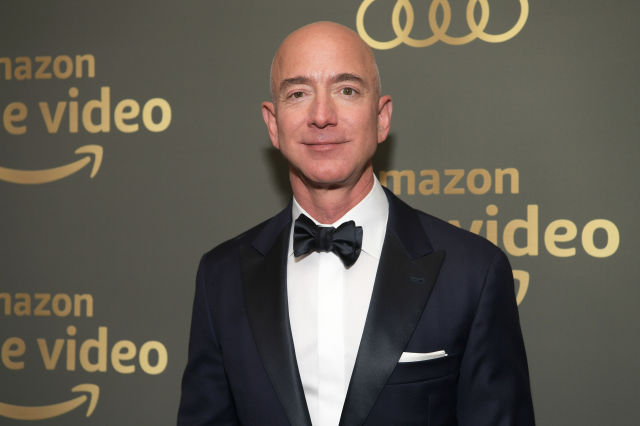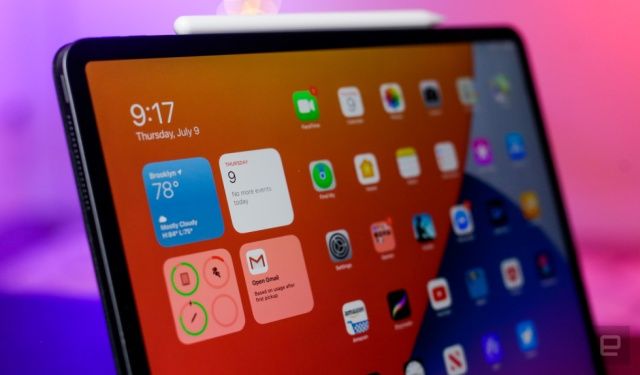Espiritu is behind Epic Gardening, the hugely popular, multiplatform gardening social media presence. At age 32, the San Diego-based gardener has laid down roots in YouTube (660,000 subscribers), Instagram (221,000), TikTok (523,000), even Pinterest, and his follower count easily crests 2 million across them. Thanks to a mix of advertising revenue and brand deals — Espiritu is the official American purveyor for Australian raised-vegetable-bed brand Birdies, for example — Epic Gardening is his full-time job.
A cornerstone of Espiritu’s appeal is that he’s self-taught. He first began gardening in 2011, after graduating with a business degree: He had been paying his bills through playing online poker and planted his first seeds as a hobby. By 2016, he left his role as a founding member of publishing startup Scribe Media to pursue Epic Gardening full time. His style is easygoing, knowledgeable and approachable. His recent series tackles beginner mistakes like “Starting Your Garden in The Wrong Place” and “Planting at the Wrong Time.” He’s made most of these mistakes himself.
“It started when I noticed there wasn’t really gardening information that speaks to an average human being,” Espiritu said. “There’s all of this jargon — like deadheading your roses [pruning a dead bloom to encourage new growth] — and we don’t know what that means when we’re just starting out. We need someone to speak to us in plain English, on a platform that we actually consume, not the county extension office website or a Master Gardener website.” (The Master Gardener program is a national system for basic horticulture training.)
He added, “Those are great sources of information, if you’re already in the game — but these people aren’t in the game.”
These months of sheltering in place have been boom times for urban-gardening influencers. Amateurs have flocked to the hobby, and Espiritu’s following has grown astronomically. “It’s like 150,000 in a month,” Espiritu told me, of his YouTube following, “and it took me five years to get my first 100,000.” He’s had to post a disclaimer on his Instagram Stories, explaining he’s getting too many questions, in comments and DMs, to adequately answer all of them. His blog, started in 2013, has crested 1 million views per month. When we first spoke over the phone, in late March, he was packing hundreds of signed copies of his urban-gardening book. As of mid-June, Espiritu had bought a new home, with the intention of turning it into an Instagram-worthy homestead.
This all goes back to the pandemic. While most of the panic buying is around survivalism — toilet paper, frozen foods, canned beans — seeds have also been selling wildly, The New York Times has reported. Though the food supply chain is stable, it’s difficult not to feel the nippings of anxiety when grocery shopping. In this kind of environment, the idea of producing one’s own food can offer an enviable illusion of control.
The idea of farming as a respite from the hamster wheel of late-stage capitalism is hardly new. Toiling with the land can sound like liberation for a generation consigned to a nine-to-five until death — even as that idealized version of farming is far from the truth. The fantasy plays out in games like Stardew Valley (which has sold more than 10 million copies), where you leave your big-city job to work on your grandfather’s land. Ideas of agrarian self-sufficiency also litter the American imagination historically, with victory gardens — personal gardens meant to divert stress from the agricultural system — emerging during World War I and II.
I’ve also noticed this trend anecdotally. Friends who had been disinterested in gardening have begun growing basil, mint, rosemary. During an early March trip to Target in Los Angeles, I noticed the seed display had been moved by the checkout, suggesting you might casually consider growing an entire plant the same way you’d buy a last-minute pack of gum. When I returned to that Target in April, the “edible” side of the display had been ransacked of everything but a few potato-seed packets. The ornamental section, plied with images of beautiful flowers, was fairly untouched.
Toiling with the land can sound like liberation for a generation consigned to a nine-to-five until death — even as that idealized version of farming is far from the truth.
“There is a bump in sales for all garden centers, seed companies and growing-related products,” Brijette Romstedt, owner of San Diego Seed Company, wrote to me, “due to the insecurity people are feeling due to the pandemic.” There is much to be insecure about: We’re relying on fashion houses and perfumers to produce PPE and hand sanitizer.
Social media presences like Epic Gardening have become vital entry points for first-timers — many of whom are quarantined in an apartment or a parent’s home, have limited space to grow and have never done it before. Yet gardening influencers also present a specific irony: Tending to soil requires deep patience while social media is a factory of instant, aggressive gratification.
“I just did a video about the things you can grow in under a month, though there’s not that many,” Espiritu said. “And the questions have become a lot more basic. People are like, ‘Why didn’t my lettuce grow, why is it looking bad.’ I tell them, ‘That’s because it’s only been alive for two weeks.’”
Newer urban-gardening accounts have rapidly gained followers, using the pandemic as a vehicle for growth. YouTube videos of low-effort tutorials, like regrowing green onions by sticking them in a glass of water, have gained serious traction, though some of them aren’t useful. “Yes, you can regrow like twentysomething different types of common vegetables,” Espiritu explained. “But what you get is unexpected. If you’re regrowing your carrot tops you don’t get carrots — you get greens, which no one’s going to eat.”
Growing something you can eat is more complex than admiring how quickly your green onions regenerate, especially if you’re starting with a seed. Considerations include hardiness zone (climate regions where certain plants thrive), container type, pest control, to name a few. But it’s easier to get hooked on the beautiful gardening inspo of Instagram and other platforms, where the time between planting and harvesting appears to be just a few seconds.
“It’s not a fast field,” Espiritu said. He had recently released a TikTok video of his five-level vertical garden of green beans and strawberries, brimming with leaves. “That’s 45 days of growing.”
Instagram is designed to monetize the time you spend on it, regardless of accuracy. It’s easy to smash that follow and fall down a wormhole of unrealistically beautiful people, places or potatoes. My explore tab feeds me triptychs of dewy plants and dewier faces, and I’m debased enough to admit it doesn’t not work for me.
Nick Cutsumpas — who competed in Netflix’s The Big Flower Fight — runs farmernicknyc, a Brooklyn-based “houseplant consultant” account. He says he’s more invested in sustainability and agriculture but found those passions less ’grammable. “You’ve seen the people on Instagram who have these amazing homesteads, right?” he explained. “It only looks that way for maybe two or three months. If I took a picture of my garden in December it would get three likes, because there’s nothing there.”
The popularity of urban gardening during the pandemic has allowed Cutsumpas to post more agricultural content, like germinating seeds in his bedroom. (He’s also taking courses at the New York Botanical Gardens and has partnered with Greensulate, a “green roof” company, to convert the rooftop of a Staten Island building into a garden.)
But the majority of his content still plays to what attracts eyeballs. “I hate the term ‘influencer,’” Cutsumpas explained, invoking images of bikini-clad women in far-flung locales. It’s a bit hypocritical when Cutsumpas also flaunts his abs in front of a plant for World Naked Gardening Day. “If this is what it takes for someone to be inspired to buy more plants, eat more plants, follow my account and pick up sustainability tips, then I am 100 percent OK with that,” Cutstampas said. But I get it: Instagram favors the thotty.
Contrast this with the Master Gardener program — also known as Extension Master Gardener, or EMG. This national program was created in Washington State in 1972 to address the public lack of knowledge about gardening. The program is often tied to universities: The EMG website has every state university’s program listed. Though course load varies by state, becoming certified might require a semester of studies and some 40 hours of volunteering, along with an open-book final. The program isn’t meant to confer academic mastery. Instead it gives laypeople a ground floor of horticultural knowledge and a scientific approach that’s way more effective than Googling alone.
“People bring in a plant sample or email a photo to the extension office Master Gardener desk,” said Signe Danler, instructor of the EMG program at Oregon State University (OSU). “The Master Gardeners on duty that day might say, ‘You’ve got aphids,’ if it’s obvious. If it’s more complicated, there’s a library and lots of online resources. If necessary, they can bump it up to the university level and have a pathology test done.” Under normal circumstances, Master Gardeners also run demonstration gardens and tables at farmers’ markets to field questions.
“I was interested in gardening from a very young age,” said Danler. “I gardened when I was in my teens, and I started gardening in planter boxes as soon as we bought our first house, my husband and I, back in 1981.” Though Danler took community college courses in horticulture in the late ’80s, she waited until her youngest child was in high school before pursuing a bachelor’s at OSU. Thanks to encouragement from an advisor and a scholarship, Danler went on to complete her master’s; OSU hired her soon after.
Over the phone, Danler cracked jokes that make starting out as a gardener feel more approachable. “I emphasize with my students, expect to kill plants,” Danler said. “Obviously, you don’t wanna kill your vegetables every year, or you don’t get anything to eat. But when you’ve been doing it as long as I have — I’ve killed hundreds of plants. That’s just part of the learning process.”
“I’ve killed hundreds of plants. That’s just part of the learning process.”
Like farming influencers on Instagram, OSU has seen a recent spike in urban-gardening interest, especially after making its courses free to the public. Its urban-vegetable-gardening module had 34,000 students in mid-April — compared to the usual size of a dozen students. Danler said that there were so many signups in the first weekend the system crashed.
Danler is suspicious of urban-gardening influencers — or more precisely, suspicious of solutions that are peddled without scientific rigor. “There are definitely people presenting themselves as authorities and handing out information that’s plain wrong,” Danler explained. “For example, people may think, ‘If I make a home remedy, it’ll be safer than something I buy at the store.’ But you can harm plants, you can do permanent damage to your soil, you can harm other animals.”
Danler has been working hard to diversify her student base, put more of OSU’s courses online and make the program more accessible. When she teaches the home horticulture certificate course, which has “the same training, the same classes” but doesn’t require volunteer hours, she gets far more students, from more-diverse backgrounds.
Unfortunately, EMG requirements can weed out folks who might otherwise be interested. A 2016 demographic study found that Master Gardener volunteers were primarily white women “educated, retired, and of economic means.” Their mean age was just under 65 years old.
“I took a store-bought potato — and I knew nothing about farming potatoes — and I just stuck it in the dirt.” Fanny Liao, the gardener behind Instagram account fansinthegarden, said. “It was winter time, and I didn’t know that it was going to be slow-growing because there’s no sun. It took about six months for that plant to grow. I thought, ‘It’s pretty, I’m going to get a pound or two of potatoes, it will be awesome.’ I dug it up, and I got one. It was smaller than my fist.”
Liao, who is based in Los Angeles County, began gardening for the first time in December 2017 and started her account in order to “photo-journal for [her] mental health.” Liao knew nothing about gardening when she started, and this entry-level focus helped her reach over 11,000 followers as of July, despite having less than 5,000 followers at the start of the pandemic. She intends to keep her platform open to beginners, and with a smaller following she’s less likely to get bogged down with questions.
Liao has no intentions of changing her strategy to attract more followers — though it helps that her account already adheres to the Instagram aesthetic. Despite her story of the solitary potato, her feed boasts vibrant harvests, like a handful of radishes in an ombre from white to fuschia or carrots that look like they’re hugging. “I take images that are appealing, because it shows people yes, you could grow this,” Liao said. “When people see it, they’re like, ‘What variety is this’ or ‘How long does it take from seed to harvest?’”
Rather than seek formal educational programs — or online extension courses — Liao has relied on advice from other gardeners on social media, and a healthy dose of trial and error. She credits much of her learning to Epic Gardening, and to CaliKim’s YouTube and Instagram. “Gardening is a never-ending learning process,” Liao said. “I’m not an expert in this field, so I’m going to leave it for the experts to answer the technical questions like Kevin [Espiritu] does. If you’re asking me what’s the ratio of soil that I need to put into the amendment? That’s not something that I know.”
Her success is just one example of the way Instagram has democratized access, diversifying the pool of urban-gardening educators. This pool includes Espiritu, who is half Filipino and half white, and someone like Timothy Hammond, a Black urban gardener based in Houston, Texas, who runs bigcitygardener on Instagram. He started bigcitygardener in April 2017 “to try and make gardening accessible and related to everyone.” Liao has become well-known enough that she inspired another Asian American woman — Northern California-based friend Alex Hisaka, who runs forestlandfarmer — to start her own gardening Instagram account.
I felt comfortable asking Liao novice questions like what grows fastest (lettuce and radish) and whether I can expect to grow enough basil to make pesto (I’ll need to prune aggressively for basil to be bushy enough), questions asked in earnest at the end of the interview, after we’d shaken off our formalities. I wanted to hear from the woman who spent six months nurturing a single potato — so embarrassingly off target from her ambitions, comparable to the three months I spent doting over 10 basil seeds, whose yield provided me with a sprinkle of garnish for a grocery store frozen pizza rather than the pesto of my dreams.
Danler plays in a different league from the influencers — one that takes in mind the health of the soil over time and its larger environmental impact, one a beginner might eventually aspire to.
“It can be hard for experienced folks like myself to remember just how much there is to know,” Danler said after I shared Espiritu’s videos with her. “All of his information is correct. I like his low-key, straightforward style. He’s addressing that level of basic knowledge, and doing it well.”
Despite this gulf, when I asked her for advice for first-time gardeners, she echoed the same sentiments as every influencer I spoke to: “Don’t get too bogged down. Gardening should be first and foremost something that you enjoy. It should feed your soul.”
“Don’t get too bogged down. Gardening should be first and foremost something that you enjoy. It should feed your soul.”
This is easy to forget, thanks to the gig economy, which has recast hobbies as side hustles, narrowing their value into what can be monetized or used to build a social media audience.
But posting my own plants to Instagram has only ever offered me a cheap, momentary thrill. It is the slower, unanticipated joys of growing that have actually been nourishing: watching an orchid send out roots, seeking footholds and future lives in the humidity of the air; watching a Pilea peperomioides sprout new limbs, living up to its nickname, “friendship plant,” when I gift these cuttings to others. Eating my basil was a separate, individual delight from actually growing it. I checked its progress every morning like a parent marking their child’s height on the door frame.
Regardless of qualification or skill, my favorite instructors have been the ones who remind me of the joys of growing for the sake of growing. TikToker Garden Marcus captures this ethos best. Watching one of his most popular videos about propagating pineapple is like taking a shot of sunlight.
The steps are simple: Cut the top off, put it in water until it sprouts roots, plant it in soil and water it. Marcus reflects on the pineapples he’s rooted over the years — this method of propagating doesn’t produce new pineapples, instead the top grows more leaves — and zooms in on a lizard that lives in one of the older bushes. He likes to feed the plant the water it was rooted in, a move with no particular utility, just a warm human impulse. And yes, he also regrows the tops of his carrots.









